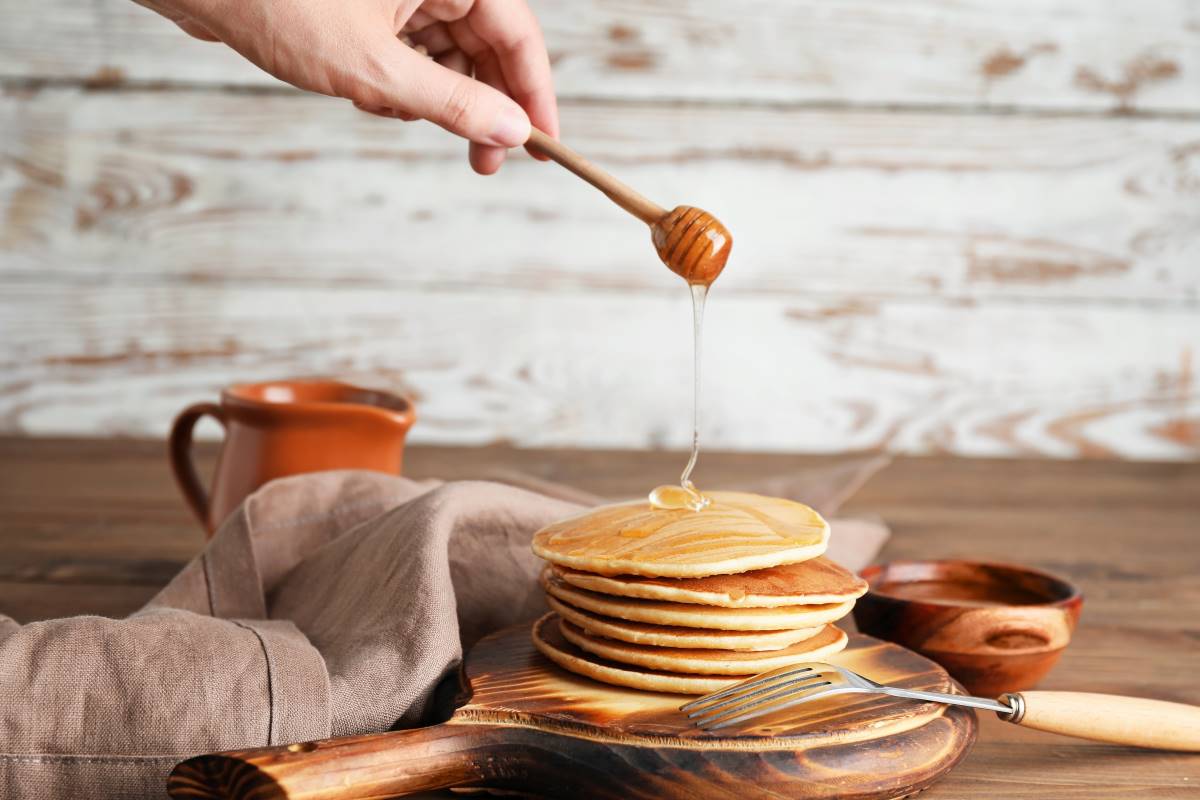You’ve probably come across the Spanish expression “Miel sobre hojuelas”. You’re likely familiar with miel (honey), but what exactly are hojuelas? And how are they made?
Hojuelas are a traditional Spanish sweet, part of what’s known as frutas de sartén (literally “frying pan fruits”) – pastries made by frying instead of baking. In Castilla-La Mancha, especially during Holy Week and Lent, hojuelas are a popular homemade treat. As with any traditional recipe, variations abound depending on the region or even the family who prepares them.
These fried pastries are made with a simple dough of just three ingredients. The dough is shaped and fried in hot oil, then dusted with sugar or coated in honey. Hojuelas are known for their thin, crispy texture, which makes them delicious – but when you drizzle honey on top… they become irresistible.
What Does “Miel sobre hojuelas” Mean?
The expression “miel sobre hojuelas” is used to describe a situation that’s already good, made even better by an extra positive detail. Like the fritters themselves – already tasty, but with honey, they’re next level.
Imagine this: you go shopping and receive a free drink with your receipt – that’s already a nice bonus. But then, your receipt also wins you a 20% discount on your purchase. That’s what we’d call miel sobre hojuelas – the cherry on top.
Origin of the Phrase
The exact origin of the phrase is uncertain, but records show it was already in use by the mid-19th century in various newspapers and magazines.
One theory suggests a connection to a Japanese expression brought over by American sailors, referring to mandamás-dori – the main, safe street of a town. These streets might have been perceived as secure or favourable places, hence the positive association.
Another theory traces the saying back to a Dutch word meaning “goal” or “end of the game”, pronounced similarly to “trozo” (piece), which implied safety or success in some traditional games.
However, neither theory has been definitively proven.
Examples in Spanish
Here are some common ways to use miel sobre hojuelas in conversation:
-
“La empresa va como miel sobre hojuelas”
→ “The business is going extremely well.” -
“Nuestra relación va como miel sobre hojuelas”
→ “Our relationship couldn’t be better.” -
“El horario es bueno; si además te pagan bien, miel sobre hojuelas”
→ “The schedule is good – and if the pay’s also great, even better!” -
“Mis compañeros trabajan muy bien y además son muy serviciales, así que miel sobre hojuelas”
→ “My colleagues work well and are very helpful – couldn’t ask for more.”
Sweet, Isn’t It?
Now that you know the meaning of miel sobre hojuelas, we hope you’ll find lots of opportunities to use it – after all, it means things are going more than well!
At Dencanto Community, we love helping you dive into the richness of the Spanish language – stay tuned to our website for more expressions and cultural insights.

